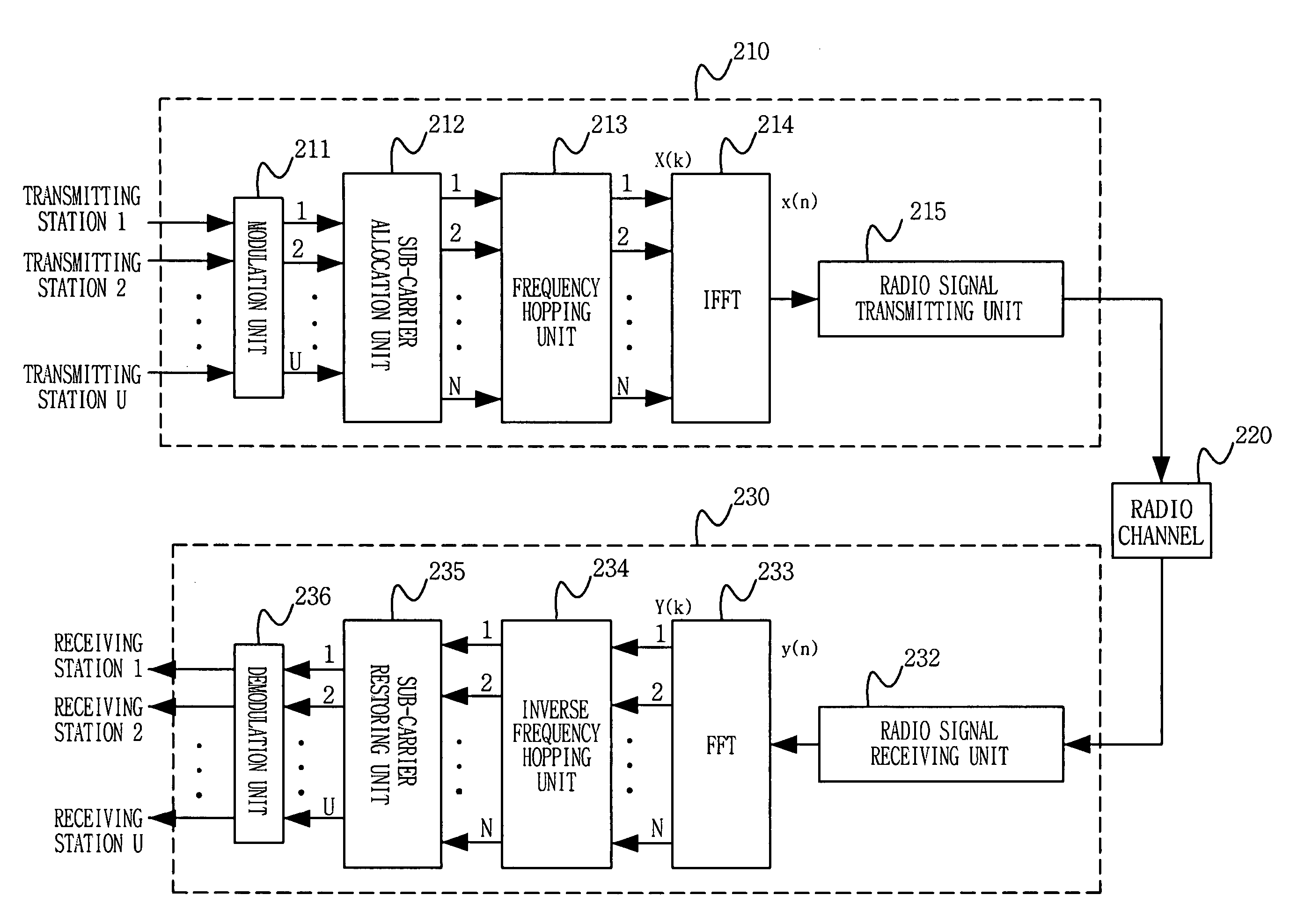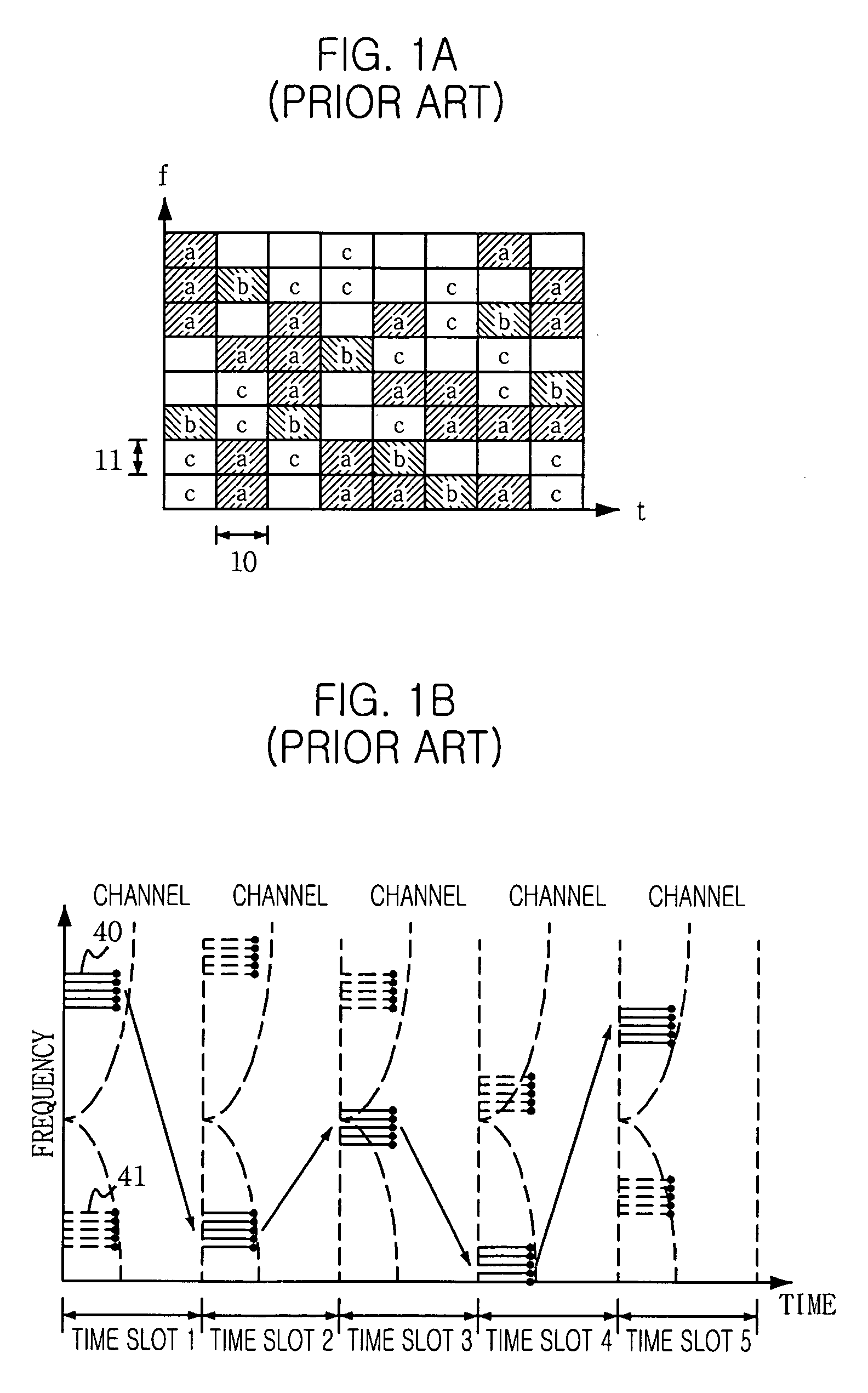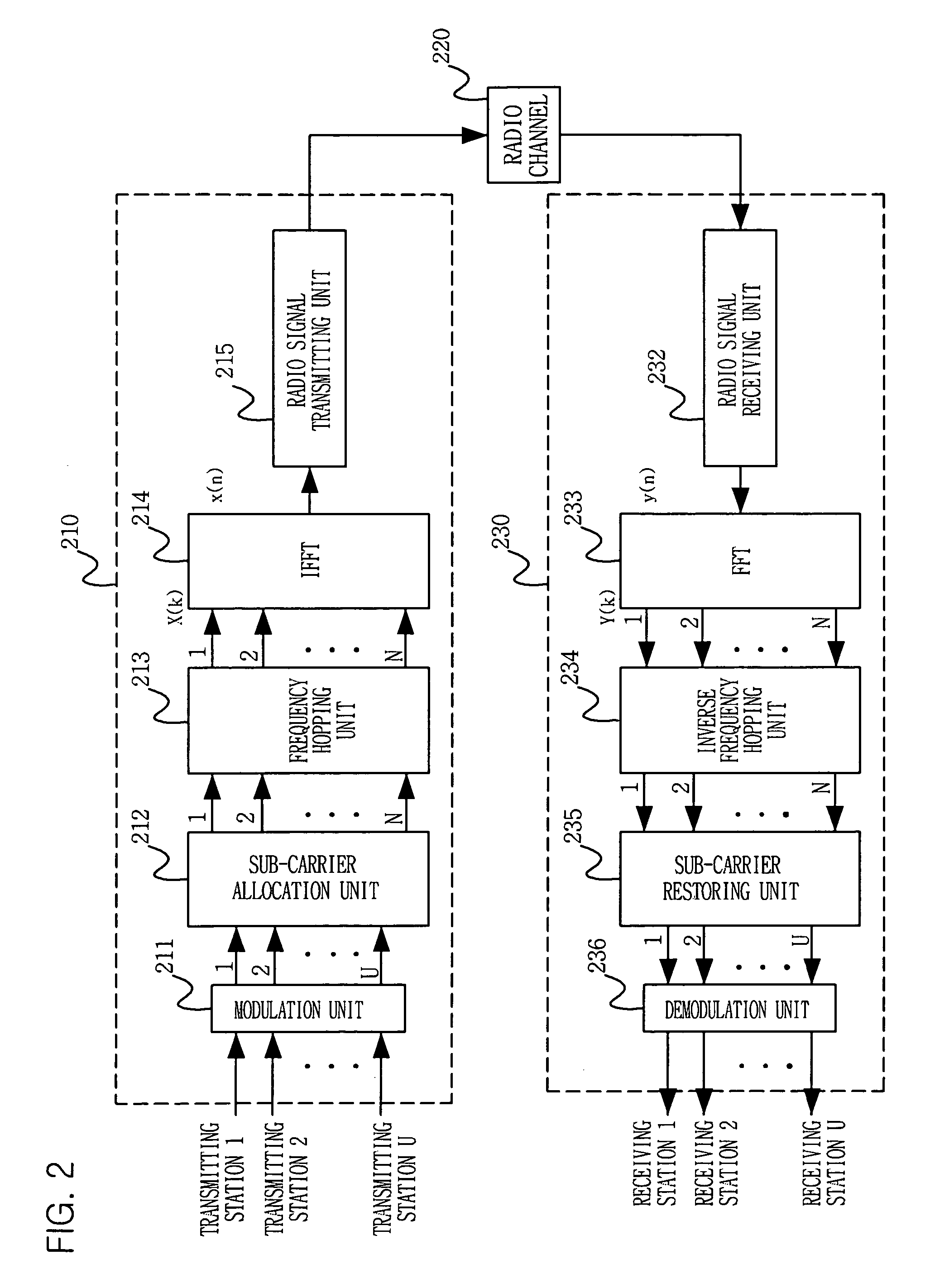Frequency hopping ofdma method using symbols of comb pattern
a frequency hopping and pattern technology, applied in the field of orthogonal frequency division multiple access (ofdma) method, can solve the problems of inability to overcome burst errors and the large power consumption of mobile stations
- Summary
- Abstract
- Description
- Claims
- Application Information
AI Technical Summary
Benefits of technology
Problems solved by technology
Method used
Image
Examples
Embodiment Construction
[0063]Other objects and aspects of the invention will become apparent from the following description of the embodiments with reference to the accompanying drawings, which is set forth hereinafter. The same reference numeral is given to the same element, although the element appears in different drawings. In addition, if further detailed description on the related prior arts is determined to blur the point of the present invention, the description is omitted. Hereafter, preferred embodiments of the present invention will be described in detail with reference to the drawings.
[0064]FIG. 2 is a block diagram illustrating a frequency hopping Orthogonal Frequency Division Multiple Access (FH-OFDMA) system using symbols of a comb pattern, i.e., comb symbols, in accordance with the present invention. Referring to FIG. 2, the FH-OFDMA communication system is formed of a transmitting system 210 and receiving system 230.
[0065]The transmitting system 210 includes a modulation unit 211, a sub-ca...
PUM
 Login to View More
Login to View More Abstract
Description
Claims
Application Information
 Login to View More
Login to View More - R&D
- Intellectual Property
- Life Sciences
- Materials
- Tech Scout
- Unparalleled Data Quality
- Higher Quality Content
- 60% Fewer Hallucinations
Browse by: Latest US Patents, China's latest patents, Technical Efficacy Thesaurus, Application Domain, Technology Topic, Popular Technical Reports.
© 2025 PatSnap. All rights reserved.Legal|Privacy policy|Modern Slavery Act Transparency Statement|Sitemap|About US| Contact US: help@patsnap.com



